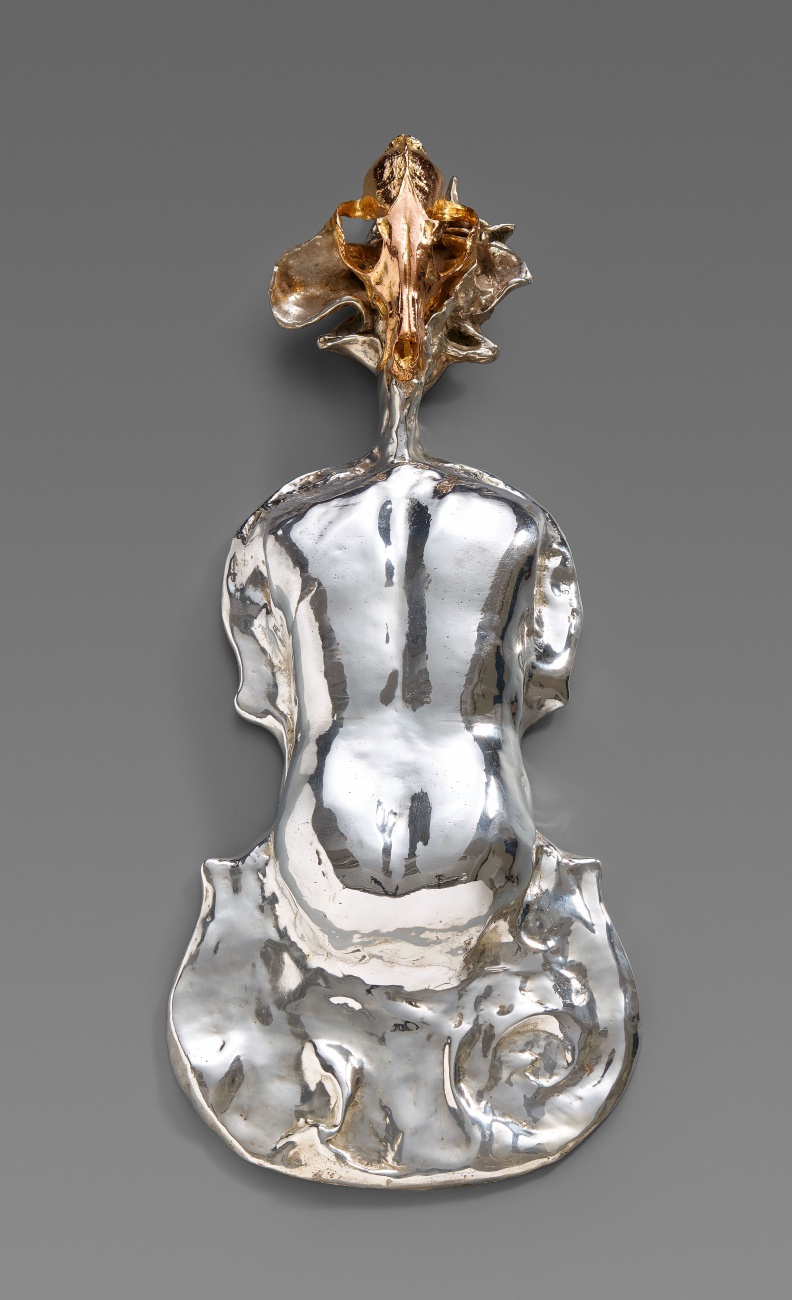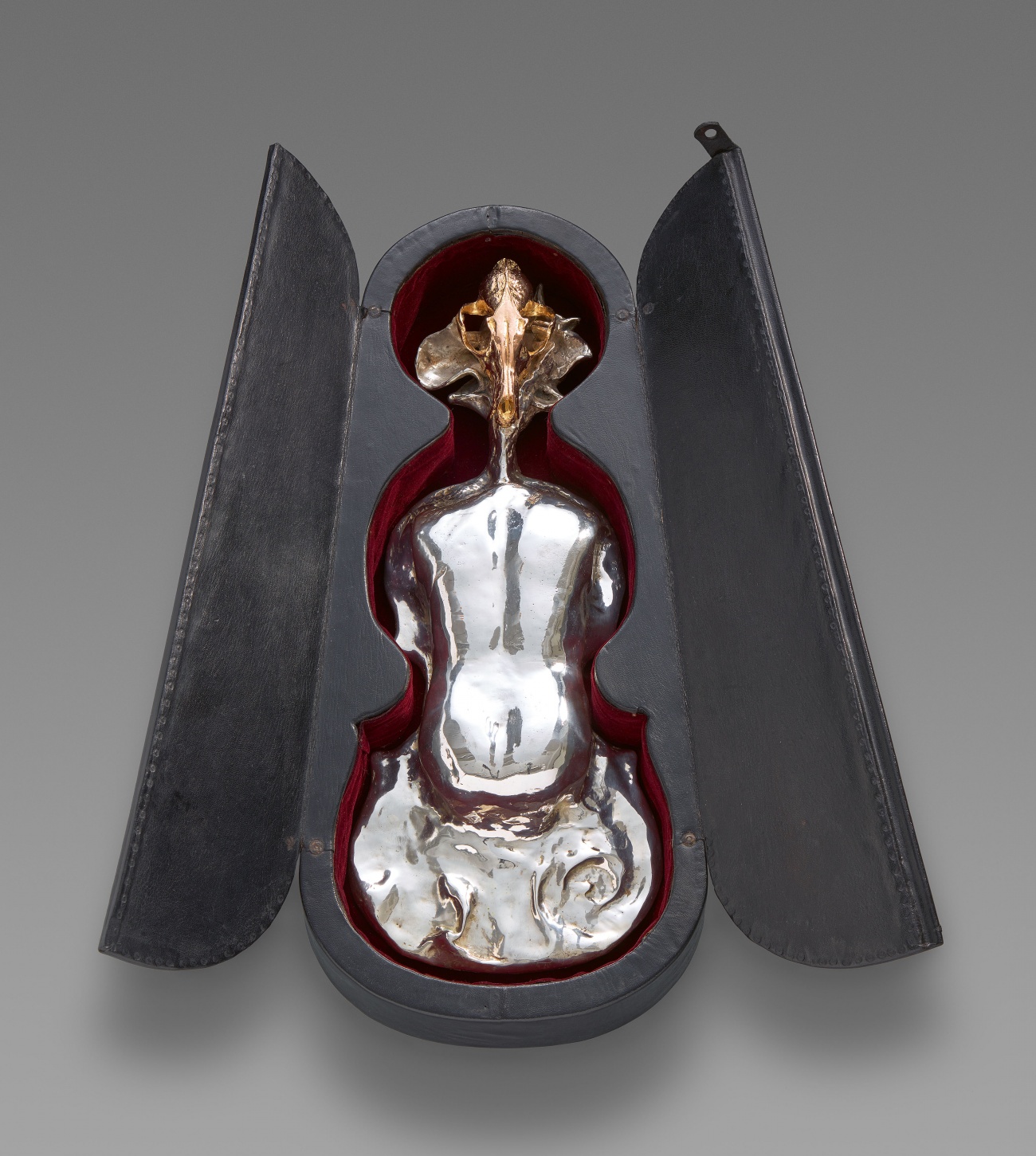SALVADOR DALÍ Y DOMENECH
Le Violon
1966
Silver object, with attached gilded head Height 53 cm. Width 21.5 cm. Depth 7cm In a black, leather-covered box lined with red velvet. Signed and dated 'Dalí - Le Violon' verso and on the right-hand side exemplar number, material inscription "PLATA" and numeration "B 741". Exemplar 5/8 + 4 exemplars p.a. Edition Claude Cueto. Foundry Exametal, Barcelona. - Partially minimally oxidised.
Salvador Dalí's predilections for erotic and morbid themes have been united in “Le violon” - an assemblage consisting of the musical instrument, a female nude's back and the skull of a South American margay. Images of skulls and instruments represent recurring motifs in the artist's oeuvre, and the theme of the female nude is omnipresent.
The morphologically intuitive connection between the form of a woman's back and the contours of a violin had already been found by Man Ray in his iconic photograph “Le violon d'Ingres” of 1924, to which Dalí makes reference here.
At the same time, Dalí's appropriation and defamiliarisation of the instrument is an ironic reckoning with music. In his memoirs, the artist describes an incident from his schooldays: “Once I selected a student of the violin as my victim: I knew him very vaguely and, because of his artistic talent, I actually felt some sense of admiration for him. […] His posture at that moment could not have been more advantageous. Without hesitating, I went to him and gave him a terrible kick on his behind. Then I jumped on his violin, trampled it into a hundred pieces and ran away like a rabbit. […] the literature teacher, who happened to be nearby, asserted his authority to intervene and, while he pressed his way through the crowd, he asked for an explanation for this incident. Then an astounding lie suddenly emerged in my head, and I told him without pausing: 'I destroyed the violin just now, in order to conclusively and irrefutably prove the superiority of painting over music.' […] It is extraordinarily enlightening to observe how I anticipated the formulation of a permanent and unified philosophical platform, which would become reinforced further over time, with an improvised lie that came about under extremely anecdotal circumstances” (Salvador Dali, Das geheime Leben des Salvador Dali, Munich 1984, p. 152, with annotation).
Certificate
With a certificate from Robert and Nicolas Descharnes, Archives Descharnes, Paris, dated 29 September 2008 (archive number 0366)
Provenance
Private collection, Spain
Literature
Robert und Nicolas Descharnes, Dalí. Le dur et le mou. Sculptures & Objects, Paris 2003, no. 279-281, p. 117 with colour illus. (bronze, plaster); Robert and Nicolas Descharnes, Dalí. The Hard and the Soft. Sculptures & Objects, Paris 2004, cat. no. 282, P. 117 with colour illus. (silver)




